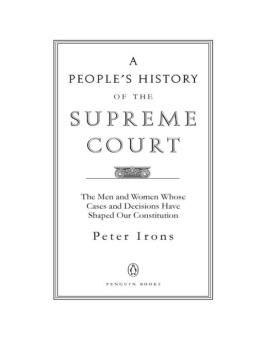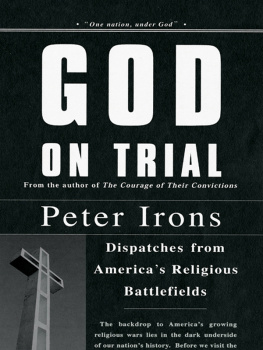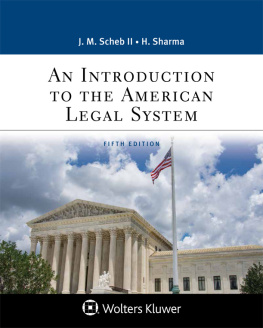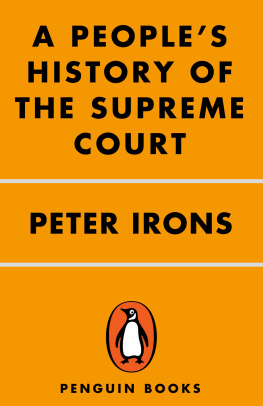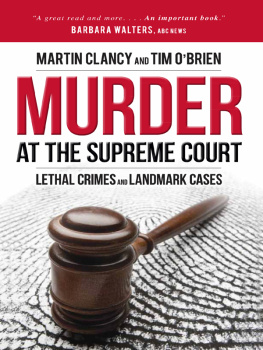Contents
Also by Peter Irons
The New Deal Lawyers
Justice at War: The Story of the Japanese American Internment Cases
The Courage of Their Convictions: Sixteen Americans Who Fought Their Way to the Supreme Court
Justice Delayed: The Record of the Japanese American Internment Cases (edited, with an introductory essay)
Brennan Vs. Rehnquist: The Battle For the Constitution
A Peoples History of the Supreme Court
Jim Crows Children: The Broken Promise of the Brown Decision
Cases and Controversies: Civil Rights and Liberties in Context (edited casebook)
War Powers: How the Imperial Presidency Hijacked the Constitution
God on Trial: Dispatches From Americas Religious Battlefields

Copyright 2012 by Peter Irons. All rights reserved
Published by John Wiley & Sons, Inc., Hoboken, New Jersey
Published simultaneously in Canada
No part of this publication may be reproduced, stored in a retrieval system, or transmitted in any form or by any means, electronic, mechanical, photocopying, recording, scanning, or otherwise, except as permitted under Section 107 or 108 of the 1976 United States Copyright Act, without either the prior written permission of the Publisher, or authorization through payment of the appropriate per-copy fee to the Copyright Clearance Center, 222 Rosewood Drive, Danvers, MA 01923, (978) 750-8400, fax (978) 646-8600, or on the web at www.copyright.com . Requests to the Publisher for permission should be addressed to the Permissions Department, John Wiley & Sons, Inc., 111 River Street, Hoboken, NJ 07030, (201) 748-6011, fax (201) 748-6008, or online at http://www.wiley.com/go/permissions .
Limit of Liability/Disclaimer of Warranty: While the publisher and the author have used their best efforts in preparing this book, they make no representations or warranties with respect to the accuracy or completeness of the contents of this book and specifically disclaim any implied warranties of merchantability or fitness for a particular purpose. No warranty may be created or extended by sales representatives or written sales materials. The advice and strategies contained herein may not be suitable for your situation. You should consult with a professional where appropriate. Neither the publisher nor the author shall be liable for any loss of profit or any other commercial damages, including but not limited to special, incidental, consequential, or other damages.
For general information about our other products and services, please contact our Customer Care Department within the United States at (800) 762-2974, outside the United States at (317) 572-3993 or fax (317) 572-4002.
Wiley also publishes its books in a variety of electronic formats and by print-on-demand. Some content that appears in standard print versions of this book may not be available in other formats. For more information about Wiley products, visit us at www.wiley.com .
ISBN 978-1-118-11499-5 (paper); ISBN 978-1-118-13804-5 (ebk);
ISBN 978-1-118-13805-2 (ebk); ISBN 978-1-118-13806-9 (ebk)
Preface
How Did You Get Here?
Theres an old story, perhaps apocryphal, about an exchange between former Justice Felix Frankfurter and a lawyer from Texas, making his first argument in the Supreme Court. Frankfurter asked, How did you get here? The puzzled lawyer paused and then replied, I took a train from Houston to Washington, and a cab from Union Station to the Court. After the courtroom laughter subsided, the red-faced lawyer realized that Frankfurter was asking how his case got to the Court, not about his own travel. Frankfurter, a stickler for procedural regularity, may have spotted a problem in the case record and wanted it clarified.
Ive tried to track this story down, with no success yet, but it does make a point that Ill develop in this book, whether its true or not. Most people have no idea how the cases the justices decide each yearfewer than 2 percent of those they are asked to reviewget to the Supreme Court for argument, a process that often takes four or five years between their initial filing in a state or federal court and their final decision.
Justice Frankfurters question to the neophyte lawyerif he really did ask itwas not meant to be facetious or badgering. Frankfurter was the acknowledged expert on Supreme Court procedure; as a Harvard Law School professor before he was named to the Court in 1939 by President Franklin D. Roosevelt, he had cowritten a classic book, The Business of the Supreme Court , and was a leading force behind congressional passage of the Judiciary Act of 1925. This law gave the justices discretionary jurisdiction over which cases they would hear and decide and freed them from a deluge of what Frankfurter called peewee cases that wasted the Courts time. As we will see throughout this book, the concept and exercise of discretion are essential at every stage of the legal process, allowing judges to focus on cases that raise important questions. There are still peewee cases, but few of them reach the Supreme Court or even come to trial.
By the end of our tour, we will have visited twenty courtrooms in thirteen states and the District of Columbia, in cases that were heard and decided by more than a hundred judges and argued by more than thirty lawyers on both sides. My role as your tour guide is to explain each step in the legal process and to leave you with a better understanding of both the strengths and the weaknesses of a system that affects the lives of every American. I have tried to explain legal terms and concepts in plain English, in case they may not be familiar to all readers, and I have placed many words and phrases in boldface type, both for emphasis and to assist readers, especially students, in taking notes (because certain words and phrases might appear in legal documents or on exams).
The aim of this book is to discuss a few cases, both civil and criminal, in enough depth so that readers can follow each step in the legal process and understand what lawyers and judges were doing and also to meet the people involved on both sides of these cases. I chose the Paul House murder case from Tennessee for several reasons. First, there is no more serious criminal offense than murder, and the charge against House, once I read the Supreme Court opinion on his case, seemed to me such a travesty of justice that it deserved a full autopsy, so to speak.
Given my personal interest in law and religion, I chose the Ten Commandments cases from Kentucky and Texas, in part because their differing outcomes showed the difficulties imposed on lower-court judges in pending Decalogue cases by the Courts conflicting opinions. I have also included accounts of two cases that involved challenges to the display of Latin crosses on public property, one on Mt. Soledad, the highest point in San Diego, California, the other in a remote area of the Mojave Natural Preserve, a national park in southern California, both of which illustrate the influence of local and national politics on conflicts over religion in the public sphere.
Another reason I chose these cases is that most Americans have strong opinions about the issues they raise, on both sides of the political spectrum. Public opinion polls have consistently shown majorities supporting capital punishment, although by diminishing margins in recent years, and favoring the display of religious symbols in public places, but with outspoken opposition to both practices. Its easy to provoke debate, mostly civil but sometimes heated, on these issues, with partisans on both sides often impervious to countering opinions and arguments. Those factors make these cases and their underlying issues ideal, in my view, for a book whose goal is not to change opinions, but to educate readers and to stimulate thought about the legal (and moral) issues these cases raise. When you finish this book, I hope youll agree that Ive succeeded in my goal. So lets begin our tour of the American legal system.


